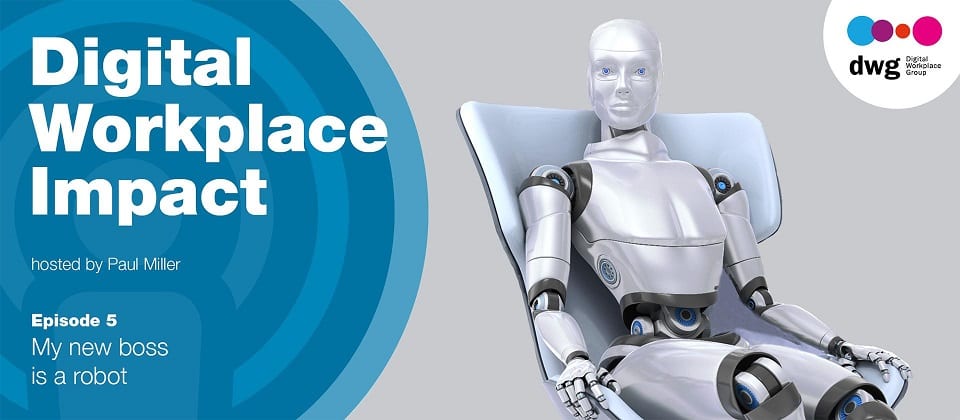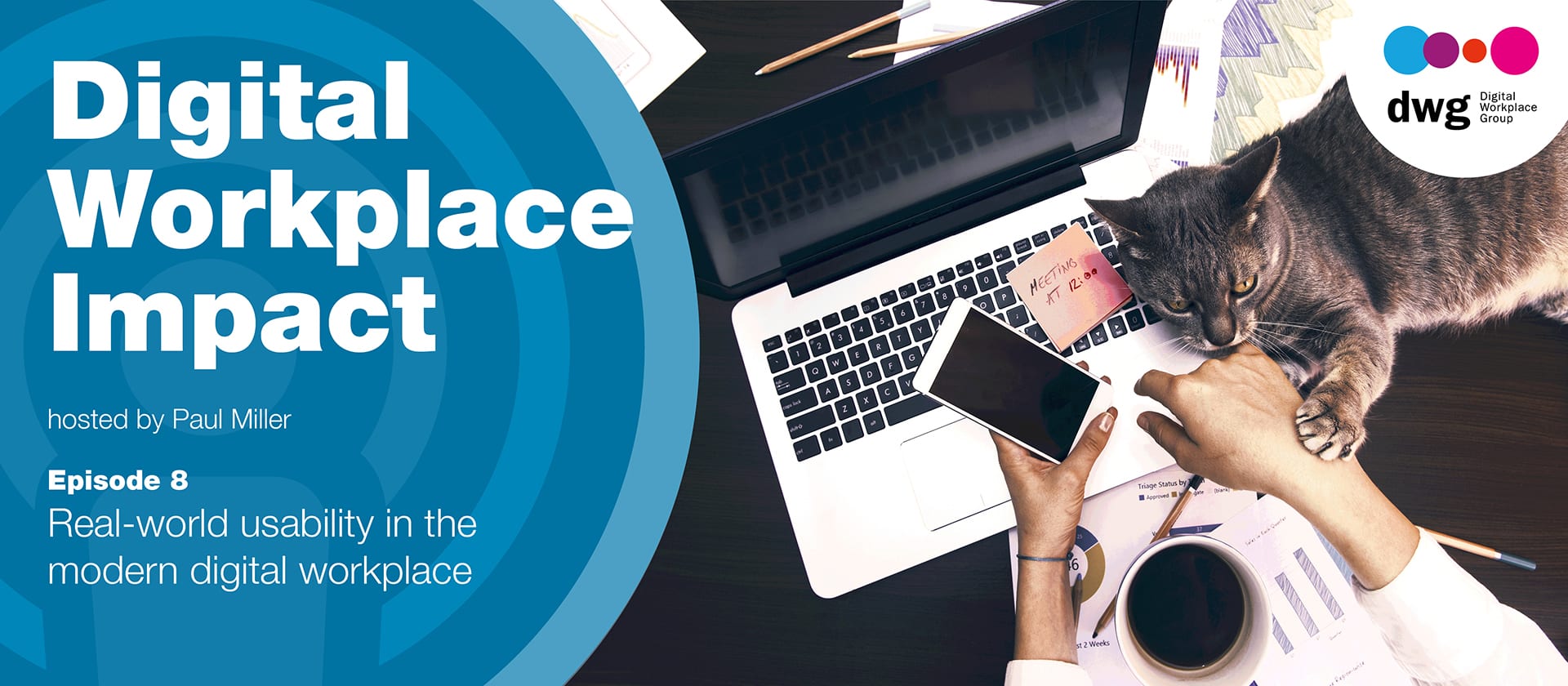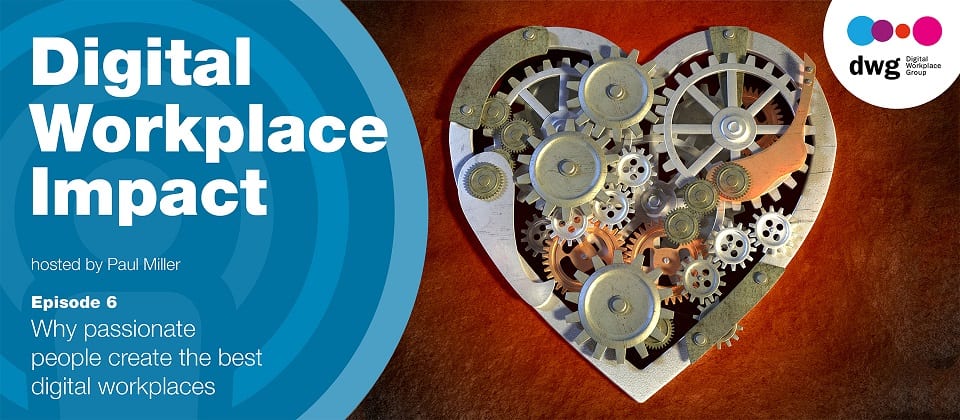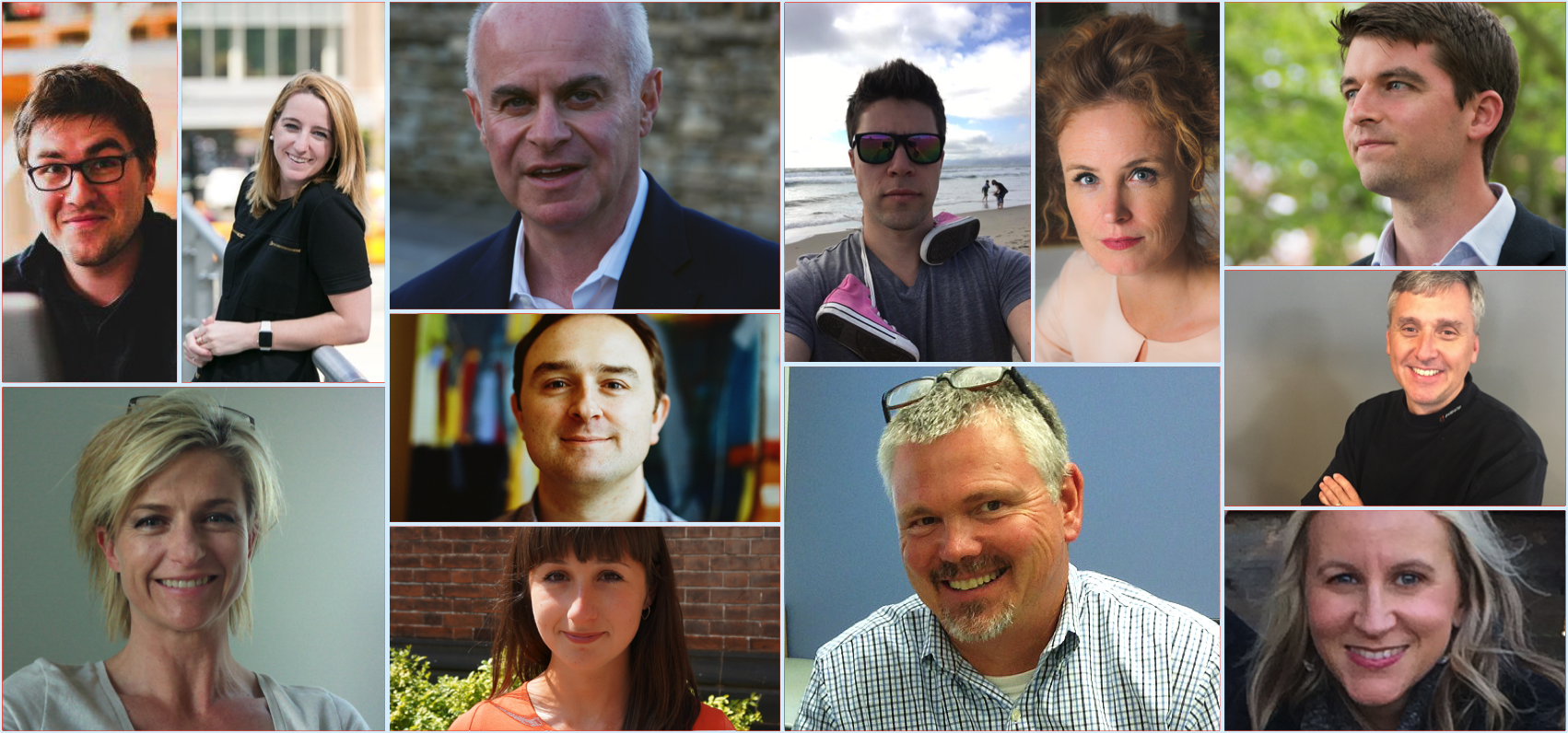Five things we’ve learned from the Digital Workplace Impact podcast

The Digital Workplace Impact podcast explores the ideas, practices and people impacting the new digital worlds of work. For each episode Paul Miller, the Founder and CEO of Digital Workplace Group, meets interesting and inspiring people who are pushing digital boundaries. So far we’ve heard about everything from digital transformation, to combining work and surfing, to what it’s like to be an Uber driver!
One of the exciting things about the digital workplace and the “future of work” is that it is still evolving. We still have much to learn, and that’s why it’s so fascinating to hear from many of those working in the field.
Here are five things we’ve learned from the some of the episodes so far.
1. Some management processes can be delivered via an app

Artificial intelligence and automation are changing digital workplace processes – and in the very near future robots will also be increasingly prevalent. This raises many questions, including exactly how far automation can go. Could you be managed by a robot or an algorithm?
In our fascinating episode “My new boss is a robot”, we heard from Dan O’Hara, then SVP Digital Workplace at Avanade. To get a glimpse of what the future of work might look like, Dan decided to become a part-time driver for Uber as this was the current closest experience to having a “robo-boss” he could find.
In his two months doing this, Dan had no interaction with any human beings from Uber. His onboarding and ongoing daily instructions were via firstly a website and then an app, although there were options to meet other drivers and people from Uber.
Interestingly, Dan thoroughly enjoyed the experience. He found he didn’t miss being told what to do next and was able to rely fully on the app to deliver satisfaction rates and advice on where to drive. It seems that some management processes can indeed successfully be managed via automation and happily experienced through an app.
2. A spirit of experimentation can drive digital transformation

In the episode “Digitally transforming two of the world’s oldest banks” we heard how traditional financial institutions are undergoing digital transformation. Barclays Bank has been around for 327 years and Wells Fargo is 164 years old – so both have a considerable heritage. But, despite their history and tradition, both banks are undergoing some degree of digital-inspired change.
What was particularly interesting was how a spirit of experimentation and innovation has been integral to success. Steven Roberts recounted how Barclay’s digital journey started with putting wi-fi in branches and buying iPads for staff, but then this move highlighted the need for increasing digital literacy and confidence among staff.
As a result, a network of 20 volunteer “digital eagles” was introduced to help staff become more digital-savvy. Such was the success of this initiative that the network grew and grew to now include 34,000 volunteers, who also help customers. The “digital eagles” feature on TV adverts, run coding competitions for children, and have driven a huge increase in the take-up of banking apps.
Meanwhile, Christy Punch agreed with this and explained that Wells Fargo also has a number of programmes running to encourage the use of digital channels.
A spirit of adventure and experimentation has driven real changes within these previously traditional institutions.
3. Take a widescreen view of employee experience

We all know that a great user experience can be a true differentiator both for employees and customers, as well as delivering other benefits such as greater efficiency. But in the context of the digital workplace, what does “user experience” actually mean?
Our eighth Digital Workplace Impact episode, “Real-world usability in the modern digital workplace”, tried to unpack that question. We heard from UX consultant and designer Paul Boag and Anil Kumar from Verizon. Paul reminded us that user experience design goes way beyond interfaces and screens to look at broader touchpoints, such as support and interactions across different channels. Redesigning the user experience means developing new strategies and even restructuring teams.
Anil works on using technology to deliver compelling employee experiences at Verizon but, as he pointed out, this experience goes way beyond the confines of the office or even the traditional “9 to 5” working day. The moment you wake up you may need to know how to get into the office, where to park, book a desk and then how to collaborate with colleagues.
Listening to the podcast, one gets the sense that the wider lens of employee experience is integral to delivering better digital workplaces. It’s really not just about screens in the office!
4. Passionate people make all the difference in the digital workplace

There’s a definite correlation between great intranets and digital workplaces and the fantastic people running them. Time after time, we’ve seen that key individuals who are passionate and committed about what they do are integral to digital workplace success.
This view was confirmed in our episode titled “How passionate people create the best digital workplaces”. This featured Linda Tinnert from IKEA and Kevin Olp, formerly of Northwestern Mutual, who have both been instrumental in evolving compelling digital experiences over a number of years in their respective organizations.
The passion that both Linda and Kevin have brought to their roles is obvious when listening to the podcast. Linda explains about how she “fell in love” with internal communications, viewing communication flows across different channels where employees get work done as the “pulse and heartbeat” of the organization. The constant change and evolution of the digital workplace has also kept her motivated. Meanwhile, Kevin has always viewed working as part of the very “fabric” of his life.
5. Some corporates truly understand “working from anywhere”

In the episode “We work together, so why not live together?” Paul Miller posed the question: Does it really matter where we work? In recent years, this has been a controversial subject with the occasional high-profile backlash against remote working.
In exploring this question, we heard from Peter Faber, founder of fascinating start-up Surf Office. Inspired by his dream of combining his love for surfing with work (rather difficult in his native landlocked Slovakia) and his subsequent experience of creating a work space for himself and his friends by the ocean, the concept of Surf Office was born. Now Peter runs a co-working and team-building space near Lisbon, where teams can work, live and even find time to surf!
It seems that some companies do support being able to work from anywhere, judging by the level of interest from different organizations. And interestingly, it even seems that more work gets done than surfing! Meanwhile, we also heard from Phil Mennie from PwC, where training for employees emphasizes that work can indeed be done from anywhere.

Subscribe to Digital Workplace Impact
We’re busy producing more episodes of Digital Workplace Impact. Make sure you never miss future shows by subscribing. You can do this via iTunes as well as through Stitcher Radio and SoundCloud.
And if you’ve enjoyed the show why not give us a rating, provide some feedback or let us know what themes you’d like us to cover on future episodes via the comments box below. Happy listening!
Categorised in: Digital workplace
